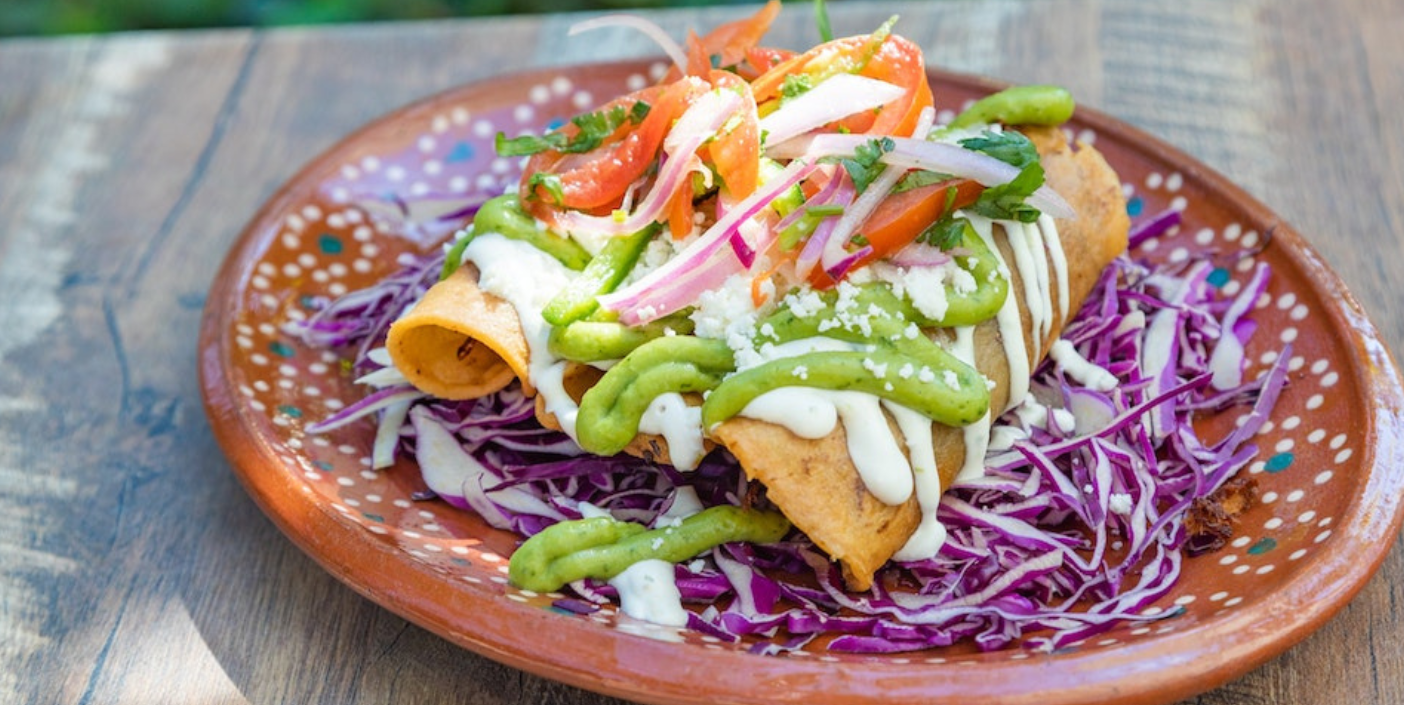
Fogg Café rolled out a new menu, focused on the flavors of Mexico, and if you are expecting Americanized interpretations of tacos and quesadillas, we have a surprise for you.
Mexican-born Fogg Café staff members worked with Chef Jack Raben to develop the new dishes and infuse them with flavors and cooking methods from home.
“It’s been so much fun,” says Raben, the Senior Director of Café and Catering. The menu was created for the Garden’s 2022 – 23 season, Mexico: A Celebration of Plants & Culture.
At the heart of the operation is Lalo Hernandez and Noemi Vazquez, who have worked together in Naples-area kitchens for the past several years.
“We pitch it to her, and she adjusts it, and then we tweak it together,” Hernandez explains.
Mexico’s cuisine varies greatly by region, and the Café staff brings multiple perspectives to recipe development. Vazquez is from Guanajuato, in the country’s center. The region is known for deep, rich sauces that form the base of dishes. Hernandez is from Hidalgo, a rural region where residents are inclined to “eat off the land,” and enjoy earthy, fresh foods, he says.

The menu’s development has been a study of these different traditions. Raben says each region, for example, has its own version of mole, a kind of sauce. He is excited to sample a version from Oaxaca that the mother of two Café staff members plans to bring during an upcoming visit. He’ll use it to learn what he can about that region’s blend.
Vazquez led the development of a salsa roja (red sauce).
“I didn’t know what I was going to get,” Raben says. “It is so good.” Hers is not the chunky, tomato-based condiment served on tortilla chips. Instead, it is a thick purée the color of chili powder with a smoky, complex taste profile. For the carnitas flautas (pork-filled tortillas), the team adds salsa roja to roasted pork, adding depth to the already flavorful meat.
“Their cooking techniques are completely different,” Raben says. The team demonstrates how they toast chilis and blend spices. Hernandez points out how they use tomatoes — dicing the outer flesh for pico de gallo and roasting the seeds for the salsa roja. The staff prepares refried beans using a traditional method that involves cooking beans and a blend of garlic, onion, pepper, and coriander separately, then combining and simmering everything before pureeing the mixture. Refried beans are used in the flautas and the sweet potato tostadas.
One challenge: pinning down ingredient quantities and cooking processes for the sake of consistency.
“They don’t work from recipes,” Raben says. “We had to translate the ingredients and the process.”
Everything, he adds, is made from scratch. Including the tortillas.
“You can’t have store bought,” Hernandez says. “They’ve got to be from scratch.”
Raben is researching Mexican herbs and spices and talking with Garden horticulturists about growing more of them here. His staff also guides him on where to source authentic Mexican products locally.
“I’m learning a lot,” he says.
The staff has enjoyed the menu development process, too. Vazquez says she likes constantly learning and trying new things at Fogg Café. Hernandez appreciates the kitchen’s collaborative cooking process.
“Here, in this kitchen, everyone has a say — even people in the ‘front of the house,’” he says, referring to the staff members who take orders and deliver food to guests. “It’s not just one person; it’s a group activity.”
The Fogg Café menu is just one aspect of Mexican plants and culture that guests can experience this season. Learn more about our special programs and events.
This blog supports this year’s theme, Mexico: A Celebration of Plants & Culture, which highlights one of the most biodiverse places on Earth and celebrates cultural connections to the natural world.

 About the Author
About the Author
Jennifer Reed is the Garden’s Editorial Director and a longtime Southwest Florida journalist.

